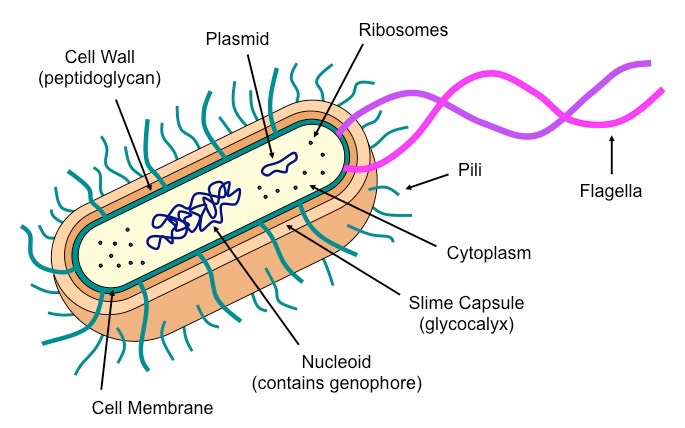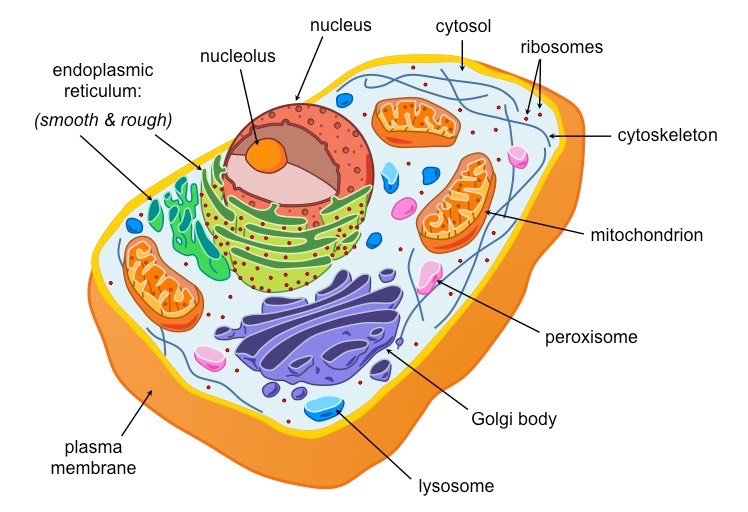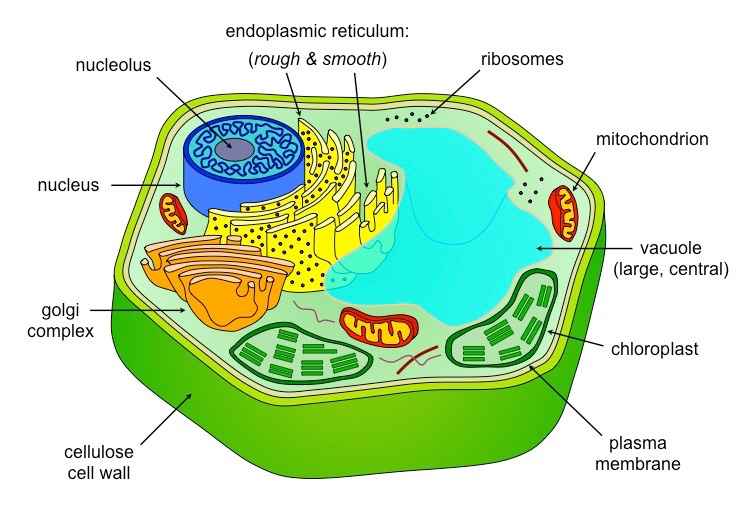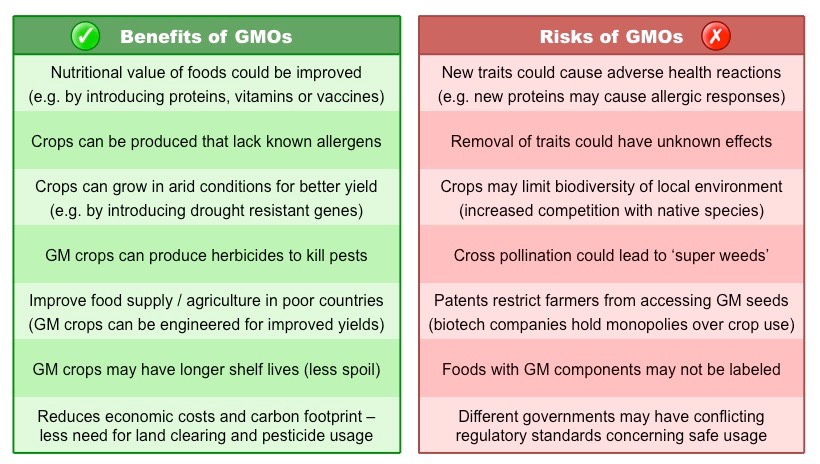IB Biology Paper 2 Topics
Photosynthesis
Photosynthesis is a two-step process:
The light-dependent reactions convert light energy from the Sun into chemical energy (ATP)
The light-independent reactions use the chemical energy to synthesise organic compounds (e.g. carbohydrates)
Step 1: Light Dependent Reactions
Light is absorbed by chlorophyll, which results in the production of ATP (chemical energy)
Light is also absorbed by water, which is split (photolysis) to produce oxygen and hydrogen
The hydrogen and ATP are used in the light-independent reactions, the oxygen is released from stomata as a waste product
Step 2: Light Independent Reactions
ATP and hydrogen (carried by NADPH) are transferred to the site of the light-independent reactions
The hydrogen is combined with carbon dioxide to form complex organic compounds (e.g. carbohydrates, amino acids, etc.)
The ATP provides the required energy to power these anabolic reactions and fix the carbon molecules together
Natural Selection
Inherited Variation – There is genetic variation within a population which can be inherited
Competition – There is a struggle for survival (species tend to produce more offspring than the environment can support)
Evolution – Over time, there is a change in allele frequency within the population gene pool
Adaptations – Individuals with beneficial traits will be more likely to survive and pass these traits on to their offspring
Selection – Environmental pressures lead to differential reproduction within a population
Genotype Frequency – favorable traits become more common over time, leading to adaptation of the population to its environment
ICEAGE
Antibiotic Resistance
When there are a high number of bacteria, a few of them are resistant to the antibiotic
Antibiotic kills pathogenic bacteria as well as the good bacteria within the body
The antibiotic-resistant bacteria now proliferate without competition
The bacteria can transfer the antibiotic resistance gene to other bacteria via plasmids and this is called conjugation
The resistant bacteria will survive and reproduce by binary fission
The introduction of antibiotic has caused the antibiotic resistance gene to become more frequent
Defense against disease
The first line of defense against infectious disease are the surface barriers that prevent the entry of pathogens into the body
Both the skin and mucous membranes release chemical secretions which restrict the growth of microbes on their surfaces
The second line of defence against infection are the non-specific cellular and molecular responses of the innate immune system
Phagocytic leukocytes migrate to infection sites and engulf foreign bodies
Inflammatory responses increase capillary permeability at infected sites, recruiting leukocytes but leading to localised swelling
Antimicrobial proteins (such as cytokines and complement proteins) regulate immune activity within the body
Fever increases body temperatures to activate heat-shock proteins and suppress microbial growth and propagation
The final line of defence against infection are the lymphocytes that produce antibodies to specific antigenic fragments
Each B cell produces a specific antibody, and the body has millions of different B cells capable of detecting distinct antigens
Helper T cells regulate B cell activation, ensuring that antibodies are only mass-produced at the appropriate times
Both B and T cells will differentiate to form memory cells after activation, conferring long-term immunity to a particular pathogen
Replication/transcription/translation
Replication
DNA replication is a semi-conservative process whereby pre-existing strands act as templates for newly synthesised strands
Helicase unwinds the double helix and separates the two polynucleotide strands
The two separated polynucleotide strands will act as templates for the synthesis of new complementary strands
DNA polymerase synthesises new strands from the two parental template strands
DNA polymerase cleaves the two excess phosphates and uses the energy released to link the nucleotide to the new strand
Transcription
RNA polymerase separates the DNA strands and synthesises a complementary RNA copy from one of the DNA strands
When the DNA strands are separated, ribonucleoside triphosphates align opposite their exposed complementary base partner
RNA polymerase removes the additional phosphate groups and uses the energy from this cleavage to covalently join the nucleotide to the growing sequence
Once the RNA sequence has been synthesised, RNA polymerase detaches from the DNA molecule and the double helix reforms
Translation
Ribosomes bind to mRNA in the cytoplasm and move along the molecule in a 5’ – 3’ direction until it reaches a start codon (AUG)
Anticodons on tRNA molecules align opposite appropriate codons according to complementary base pairing (e.g. AUG = UAC)
Each tRNA molecule carries a specific amino acid (according to the genetic code)
Ribosomes catalyse the formation of peptide bonds between adjacent amino acids (via condensation reactions)
The ribosome moves along the mRNA molecule synthesising a polypeptide chain until it reaches a stop codon
At this point translation ceases and the polypeptide chain is released
Stem cells
Stem cells are necessary for embryonic development as they are an undifferentiated cell source from which all other cell types may be derived
As these tissues cannot be regenerated or replaced, stem cells have become a viable therapeutic option when these tissues become damaged
Stem cells can be used to replace damaged or diseased cells with healthy, functioning ones
This process requires:
The use of biochemical solutions to trigger the differentiation of stem cells into the desired cell type
Surgical implantation of cells into the patient’s own tissue
Suppression of host immune system to prevent rejection of cells (if stem cells are from foreign source)
Careful monitoring of new cells to ensure they do not become cancerous
The ethical considerations associated with the therapeutic use of stem cells will depend on the source
Using multipotent adult tissue may be effective for certain conditions, but is limited in its scope of application
Stem cells derived from umbilical cord blood need to be stored and preserved at cost, raising issues of availability and access
The greatest yield of pluripotent stem cells comes from embryos, but requires the destruction of a potential living organism
Mitosis/Meiosis
Mitosis
Prophase:
DNA supercoils and chromosomes condense (becoming visible under microscope)
Chromosomes are comprised of genetically identical sister chromatids (joined at a centromere)
Paired centrosomes move to the opposite poles of the cell and form microtubule spindle fibres
The nuclear membrane breaks down and the nucleus dissolves
Metaphase:
Microtubule spindle fibres from both centrosomes connect to the centromere of each chromosome
Microtubule depolymerisation causes spindle fibres to shorten in length and contract
This causes chromosomes to align along the centre of the cell (equatorial plane or metaphase plate)
Anaphase:
Continued contraction of the spindle fibres causes genetically identical sister chromatids to separate
Once the chromatids separate, they are each considered an individual chromosome in their own right
The genetically identical chromosomes move to the opposite poles of the cell
Telophase:
Once the two chromosome sets arrive at the poles, spindle fibres dissolve
Chromosomes decondense (no longer visible under light microscope)
Nuclear membranes reform around each chromosome set
Cytokinesis occurs concurrently, splitting the cell into two
Meiosis
The first meiotic division is a reduction division (diploid → haploid) in which homologous chromosomes are separated
P-I: Chromosomes condense, nuclear membrane dissolves, homologous chromosomes form bivalents, crossing over occurs
M-I: Spindle fibres from opposing centrosomes connect to bivalents (at centromeres) and align them along the middle of the cell
A-I: Spindle fibres contract and split the bivalent, homologous chromosomes move to opposite poles of the cell
T-I: Chromosomes decondense, nuclear membrane may reform, cell divides (cytokinesis) to form two haploid daughter cells
The second division separates sister chromatids (these chromatids may not be identical due to crossing over in prophase I)
P-II: Chromosomes condense, nuclear membrane dissolves, centrosomes move to opposite poles (perpendicular to before)
M-II: Spindle fibres from opposing centrosomes attach to chromosomes (at centromere) and align them along the cell equator
A-II: Spindle fibres contract and separate the sister chromatids, chromatids (now called chromosomes) move to opposite poles
T-II: Chromosomes decondense, nuclear membrane reforms, cells divide (cytokinesis) to form four haploid daughter cells
Cell membrane structure



Protein types/functions
Collagen: A component of the connective tissue of animals
Spider silk: A fiber spun by spiders and used to make webs
Insulin: Protein produced by the pancreas and triggers a reduction in blood glucose levels
Glucagon: Protein produced by the pancreas that triggers an increase in blood glucose levels
Immunoglobulins: Antibodies produced by plasma cells that are capable of targeting specific antigens
Haemoglobin: A protein found in red blood cells that is responsible for the transport of oxygen
Cytochrome: A group of proteins located in the mitochondria and involved in the electron transport chain
Rhodopsin: A pigment in the photoreceptor cells of the retina that is responsible for the detection of light
Actin: Thin filaments involved in the contraction of muscle fibres
Myosin: Thick filaments involved in the contraction of muscle fibres
Rubisco: An enzyme involved in the light-independent stage of photosynthesis
Carbon Cycle
Autotrophs/producers convert carbon dioxide into carbohydrates/carbon
compounds in photosynthesis;
Carbon dioxide diffuses/moves from the atmosphere /water into autotrophs/plants;
Carbon compounds are transferred through food chains/OWTTE;
Carbon dioxide produced by respiration diffuses out of organisms into
water/atmosphere;
Decomposers release carbon dioxide during decay/putrefaction;
Methane is produced from organic matter in anaerobic conditions (by
methanogens);
Partially decomposed organic matter from past geological eras/fossils was
converted into coal/oil/gas that accumulated in rocks
Action Potential
Action potentials are the rapid changes in charge across the membrane that occur when a neuron is firing
Depolarisation
Depolarisation refers to a sudden change in membrane potential – usually from a (relatively) negative to positive internal charge
In response to a signal initiated at a dendrite, sodium channels open within the membrane of the axon
As Na+ ions are more concentrated outside of the neuron, the opening of sodium channels causes a passive influx of sodium
The influx of sodium causes the membrane potential to become more positive (depolarisation)
Repolarisation
Repolarisation refers to the restoration of a membrane potential following depolarisation (i.e. restoring a negative internal charge)
Following an influx of sodium, potassium channels open within the membrane of the axon
As K+ ions are more concentrated inside the neuron, opening potassium channels causes a passive efflux of potassium
The efflux of potassium causes the membrane potential to return to a more negative internal differential (repolarisation)
The refractory period
The refractory period refers to the period of time following a nerve impulse before the neuron is able to fire again
In a normal resting state, sodium ions are predominantly outside the neuron and potassium ions mainly inside (resting potential)
Following depolarisation (sodium influx) and repolarisation (potassium efflux), this ionic distribution is largely reversed
Before a neuron can fire again, the resting potential must be restored via the antiport action of the sodium-potassium pump
Small intestine
The small intestine absorbs usable food substances (i.e. nutrients – monosaccharides, amino acids, fatty acids, vitamins, etc.)
The small intestine is composed of four main tissue layers, which are (from outside to centre):
Serosa – a protective outer covering composed of a layer of cells reinforced by fibrous connective tissue
Muscle layer – outer layer of longitudinal muscle (peristalsis) and inner layer of circular muscle (segmentation)
Submucosa – composed of connective tissue separating the muscle layer from the innermost mucosa
Mucosa – a highly folded inner layer which absorbs material through its surface epithelium from the intestinal lumen
Villi increase the surface area of epithelium over which absorption is carried out and absorb monomers formed by digestion as well as mineral ions and vitamins
Microvilli – Ruffling of epithelial membrane further increases surface area
Rich blood supply – Dense capillary network rapidly transports absorbed products
Single layer epithelium – Minimises diffusion distance between lumen and blood
Lacteals – Absorbs lipids from the intestine into the lymphatic system
Intestinal glands – Exocrine pits (crypts of Lieberkuhn) release digestive juices
Membrane proteins – Facilitates transport of digested materials into epithelial cells
MR.SLIM
Arteries/Veins
Arteries
The function of arteries is to convey blood at high pressure from the heart ventricles to the tissues of the body and lungs
They have a narrow lumen (relative to wall thickness) to maintain a high blood pressure (~ 80 – 120 mmHg)
They have a thick wall containing an outer layer of collagen to prevent the artery from rupturing under the high pressure
The arterial wall also contains an inner layer of muscle and elastic fibres to help maintain pulse flow (it can contract and stretch)
Flow of Blood
Blood is expelled from the heart upon ventricular contraction and flows through the arteries in repeated surges called pulses
The muscle fibres help to form a rigid arterial wall that is capable of withstanding the high blood pressure without rupturing
The elastic fibres allow the arterial wall to stretch and expand upon the flow of a pulse through the lumen
Veins
The function of veins is to collect the blood from the tissues and convey it at low pressure to the atria of the heart
They have a very wide lumen (relative to wall thickness) to maximise blood flow for more effective return
They have a thin wall containing less muscle and elastic fibres as blood is flowing at a very low pressure (~ 5 – 10 mmHg)
Because the pressure is low, veins possess valves to prevent backflow and stop the blood from pooling at the lowest extremities
Flow of Blood
Blood is at very low pressure in the veins which can make it difficult for the blood to move against the downward force of gravity
When the skeletal muscles contract, they squeeze the vein and cause the blood to flow from the site of compression
Flow of Energy in ecosystems
Plants receive energy from the sun/light;
Convert it to chemical energy through photosynthesis;
Chemical energy is stored in organic/C-compounds;
The energy is passed to other organisms through feeding
Eventually, the chemical energy is lost as heat energy;
Energy is non-recyclable/lost from a community/ecosystem;
Energy losses between trophic levels limit food chains/mass of top trophic levels/only about 10% of energy is transferred;
Nutrient cycling
Autotrophs obtain inorganic nutrients from the air, water and soil and convert them into organic compounds
Heterotrophs ingest these organic compounds and use them for growth and respiration, releasing inorganic byproducts
When organisms die, saprotrophs decompose the remains and free inorganic materials into the soil
The return of inorganic nutrients to the soil ensures the continual supply of raw materials for the autotrophs
